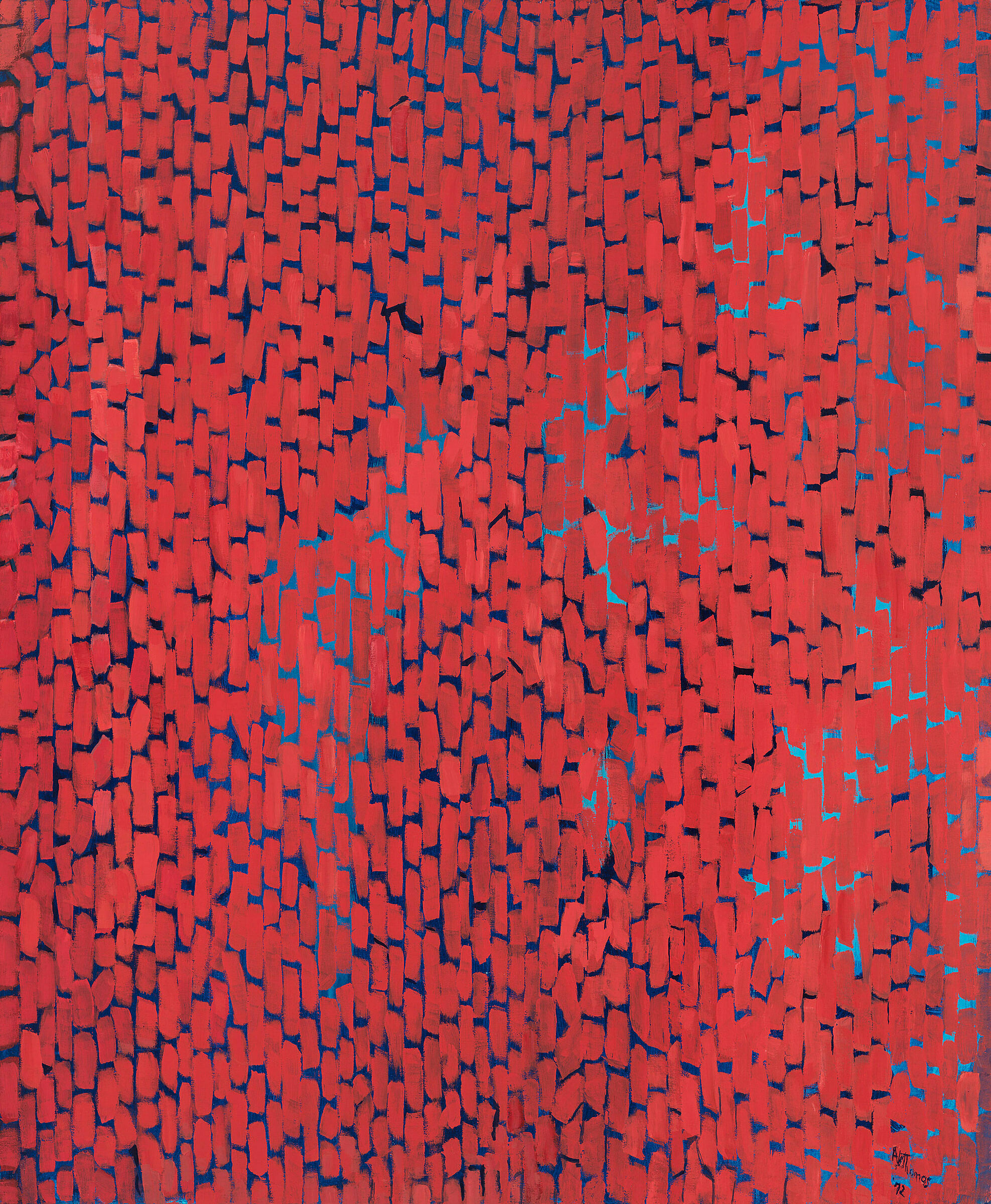Alma Thomas
1891–1978
After devoting herself full time to painting in 1960, at the age of sixty-nine, Alma Thomas rose to prominence as a Color Field abstractionist. The first graduate of the fine arts program at Howard University in Washington, DC, in 1924, Thomas had spent thirty-five years as an art teacher in the city’s public schools. During her years as a teacher she was active in the Washington arts community and took classes at American University, where she first began to paint abstractions. With vibrant canvases such as Mars Dust Thomas forged a link to the thriving community of abstractionists known as the Washington Color School— which included the painters Morris Louis, Kenneth Noland, and Sam Gilliam. Like these artists, Thomas turned to acrylic paint and used her large-scale canvases to explore experimental techniques. Unlike them, however, Thomas rooted her images in nature, especially the abstract patterns created by the interaction of light and earth.
In Mars Dust the lyrical, allover surface of dappled red brushstrokes conjures the massive dust storms created by the iron- rich soil of Mars, which are fueled by the heat of the sun and often envelop the planet for weeks or months. These atmospheric phenomena were first observed at close range during NASA’s 1971–72 space mission, events that Thomas avidly followed. In Mars Dust the luminous cobalt underlayer adds to the shimmering effect of the red strokes, which the artist created by using an elastic band as her guide. The year she painted this image, Thomas became the first African American woman to be accorded a solo exhibition at the Whitney Museum.
Introduction
Alma Woodsey Thomas (September 22, 1891 – February 24, 1978) was an African-American artist and art teacher who lived and worked in Washington, D.C., and is now recognized as a major American painter of the 20th century. She is the first African-American woman to be included in the White House's permanent art collection. Thomas is best known for the "exuberant", colorful, abstract paintings that she created after she retired from a 35-year career teaching art at Washington's Shaw Junior High School.
Thomas, who is often considered a member of the Washington Color School art movement but alternatively classified by some as an Expressionist and/or Black Abstractionist, earned her teaching degree from University of the District of Columbia (known as Miner Normal School at the time). She was the first graduate of Howard University's art department, and maintained connections to that university through her life. She achieved success as an African-American female artist despite the segregation and prejudice of her time.
Thomas's reputation has continued to grow since her death. Her paintings are displayed in notable museums and collections and have been the subject of several books and solo museum exhibitions. The Smithsonian American Art Museum maintains the world's largest public collection of her work. In 2021, a museum sold Thomas's painting Alma's Flower Garden in a private transaction for $2.8 million.
Wikidata identifier
Q4733608
Information from Wikipedia, made available under the Creative Commons Attribution-ShareAlike License . Accessed January 2, 2026.
Introduction
Born in Columbus, Georgia in 1891, Alma Thomas's family moved to Washington, D.C. when Thomas was a teenager. She graduated from Howard University's art department in 1924, then taught middle school. While working as a teacher, Thomas earned a master's degree in art education from Columbia University. During her fifties, Thomas took more painting classes at American University, and in 1972 she became the first Black woman to receive a solo exhibition at the Whitney Museum of American Art. She did not subscribe to a school or discipline, but her work is closely related to the Washington Color School.
Country of birth
United States
Roles
Artist, painter, teacher
ULAN identifier
500041104
Names
Alma Thomas, Alma Woodsey Thomas, Alma W. Thomas
Information from the Getty Research Institute's Union List of Artist Names ® (ULAN), made available under the ODC Attribution License. Accessed January 2, 2026.




